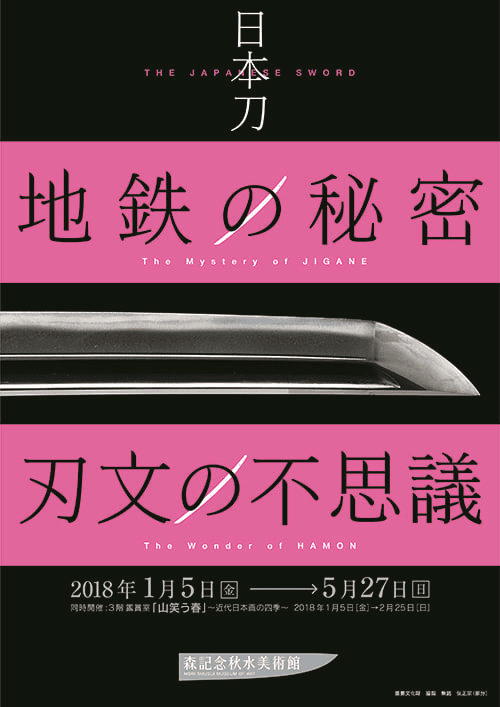Though Japanese swords were originally created as weapons, they also became popular as gifts given primarily among the samurai and nobility, including as offerings to those in high positions, and as rewards to vassals. They were also treated as sacred items, given as dedications to shrines and temples. This was because Japanese swords offered more than their mere functionality as weaponry: they served as symbols of the samurai and nobility, created in pursuit of beauty. Even today, Japanese swords are at times described as “art made of iron,” with a sensuousness beloved by art lovers around the world.
This exhibition focuses on the beautiful sparkle of the jigane patterns created through the many layers of metal hammered together by swordmakers, as well as the delicate hamon patterns created along sword edges through the quenching process. By shining a spotlight on these, we hope to provide a better glimpse of the depth and beauty of these characteristics.
No two swords have the same jigane or hamon patterns, and there are numerous variations, depending on the era or region where swords were produced, or the people who made them. The blade of each sword serves as a canvas, bearing a refined sensuousness created by these expert swordmakers.
image
左上:兜 鉄錆地六十二間筋兜/
右上:目貫 海老図/
右中:縁頭 恵比寿大黒図 銘 大森秀知(花押)/
中央:拵 朱漆塗桜花文蒔絵散印籠刻鞘打刀拵/
下:重要文化財 脇指 無銘 伝正宗





 Back
Back